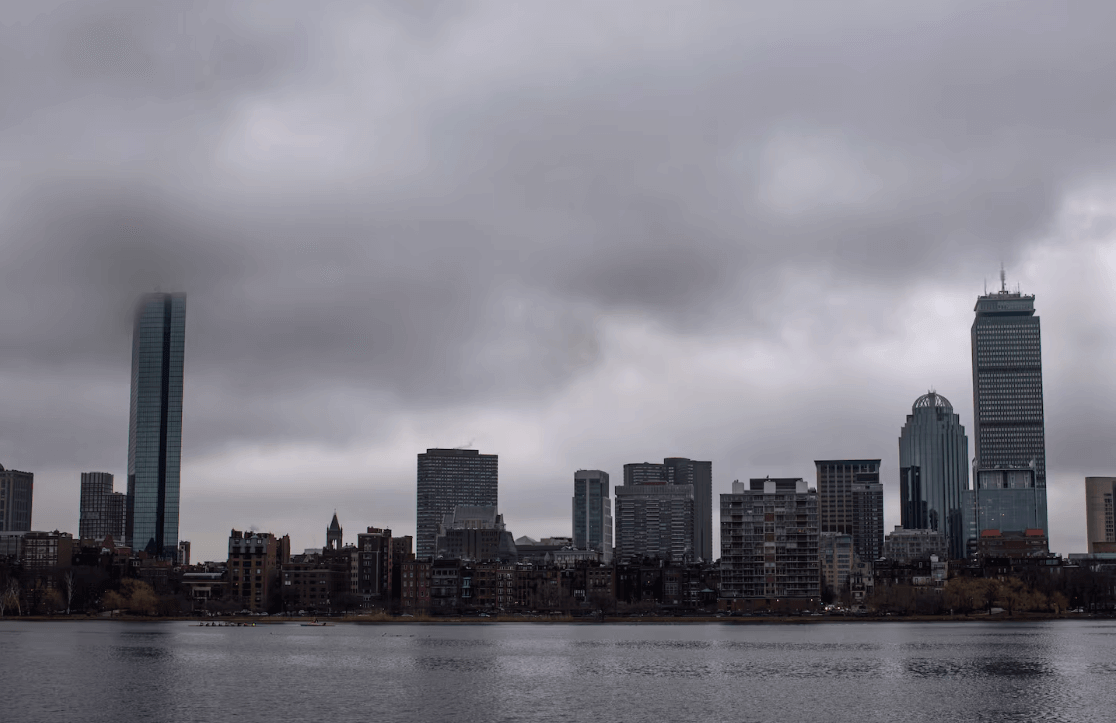特朗普正在为“教育和医疗”而来。这对马萨诸塞州来说是个大问题

【中美创新时报2025 年 2 月 23 日编译讯】(记者温友平编译)教育和医疗保健行业在马萨诸塞州雇用了大约 100 万人——几乎占所有工资的四分之一。这个所谓的教育和医疗行业——已成为该州创造就业机会、创办公司和在经济衰退期间提供稳定的经济超级大国——正受到严重冲击,因为特朗普政府试图削减 NIH 的资金并解散教育部,这可能会使数十亿美元的学生贷款和助学金陷入混乱,而共和党控制的国会则旨在控制医疗补助支出。《波士顿环球报》专栏作家Shirley Leung 对此作了下述详细报道。
马萨诸塞州经济的实力归结为一件事:智力。
它已经成为我们的品牌和身份——由诺贝尔奖获得者、世界知名大学和医院的教授在科学和医学方面取得的进步以及从肯德尔广场到海港的企业实验室中涌现出的改变生活的创新所推动。
现在一切都感觉很脆弱。真的很脆弱。
教育和医疗保健行业在马萨诸塞州雇用了大约 100 万人——几乎占所有工资的四分之一。这个所谓的教育和医疗行业——已成为该州创造就业机会、创办公司和在经济衰退期间提供稳定的经济超级大国——正受到严重冲击,因为特朗普政府试图削减 NIH 的资金并解散教育部,这可能会使数十亿美元的学生贷款和助学金陷入混乱,而共和党控制的国会则旨在控制医疗补助支出。

经济学家和商界领袖表示,潜在的影响将远远超出大学和医院,因为该行业对该州的经济和竞争力至关重要。目前,拟议的 NIH 削减构成了最直接的威胁,因为马萨诸塞州是人均 NIH 资金最多的州。(该州的机构去年获得了约 35 亿美元的 NIH 拨款,用于研究癌症、阿尔茨海默氏症和其他疾病。)
这不仅可能危及医学研究和正在进行的临床试验,还可能对就业产生重大影响。一项分析预测,根据特朗普总统提出的新的 NIH 资助方案,马萨诸塞州的机构每年将损失超过 5 亿美元。马萨诸塞大学多纳休研究所估计,如果特朗普继续削减其他类型的联邦拨款,这可能会导致数千个甚至更多的工作岗位流失。波士顿大学已经开始放缓支出,麻省理工学院则冻结了大多数非教职人员的招聘。
“这在很多方面都是一个黑天鹅事件,因为它来得太突然,影响太深远,”专门从事医疗保健投资的波士顿风险投资公司 Flare Capital Partners 的联合创始人兼普通合伙人 Michael Greeley 表示,他指的是经济受到的意外冲击。
Greeley 预计,大学和医院将首先感受到财务压力,而随着创新和药物开发渠道的放缓,生命科学行业将在几年内感受到影响。
“公司和初创公司的数量可能会开始减少,”他说。“我希望这不会是一次根本性的重置。”
根据麻省大学多纳休研究所对联邦数据的分析,教育和医疗行业是该州最大的就业类别,占劳动力市场的 28%。这涵盖了从大学教授和 K-12 教师到医生、护士和医院清洁工的所有岗位,不过大部分来自高等教育和医疗保健。
该行业的强劲发展也推动了专业、商业和科学岗位的增长,这些岗位约占 640,000 个职位,约占该州整体就业岗位的 10%。从律师到企业科学家,这些岗位中的许多都来自医院、大学和风险投资的生态系统,这些生态系统为生命科学行业提供了支持。根据麻省大学多纳休研究所的数据,过去十年来,马萨诸塞州与研发相关的岗位数量翻了一番,目前占美国研发岗位总数的十分之一。
没有人认为教育和医疗会失去其在马萨诸塞州的主导地位,但越来越多的人认为,削减开支的影响可能会波及从商业房地产到律师事务所再到州预算等各个领域。这使得政策制定者、大学校长和商界领袖都在竭尽全力地保留他们能保留的东西。
“这会对我们造成伤害,”州经济部长 Yvonne Hao 说道。
尽管马萨诸塞州经济一直很稳健,但 Hao 表示,由于形势如此不稳定,很难预测华盛顿出台的政策转变将带来怎样的冲击。她认为马萨诸塞州比其他州更有能力抵御动荡,尤其是在该州在去年秋天通过的一项经济发展计划中拨出近 40 亿美元自有资金来支持生命科学和气候技术等关键行业之后。
“这可能不足以填补联邦挑战留下的全部空白,但至少我们有一些弹药可以在我们自己的州控制,”Hao 说道。
甚至在特朗普重返白宫之前,该州最重要的行业就面临经济逆风。
随着美国高中毕业生人数在今年达到顶峰,迫使一些校园关闭,另一些校园缩小规模,各大学院和大学一直在为期待已久的“人口悬崖”做准备。这一翻天覆地的变化肯定会对拥有约 100 所大学的马萨诸塞州产生巨大影响。与此同时,不断上涨的学费让许多家庭质疑大学学位是否值得投资。
与此同时,由于成本上涨速度快于收入,医疗保健在疫情过后面临巨大的财务压力。麻省总医院是该州最大的医疗系统和最大的私营雇主,最近宣布了该组织历史上最大规模的裁员,将导致数百人被裁员。
国会目前正在寻求削减 8800 亿美元的医疗补助。这可能会使管理马萨诸塞州医疗补助计划的 MassHealth 成为众矢之的,因为它依赖数十亿美元的联邦报销来为穷人和残疾人提供医疗保险福利。
加剧不确定性的是,疫苗怀疑论者、担任特朗普卫生与公众服务部部长的罗伯特·F·肯尼迪 (Robert F. Kennedy Jr.) 将在多大程度上推动颠覆医疗保健的变革,以及特朗普提名的教育部长琳达·麦克马洪 (Linda McMahon) 能否实现他废除教育部的愿景。
马萨诸塞大学多纳休研究所经济与公共政策研究主任马克·梅尔尼克 (Mark Melnik) 表示:“任何削弱教育和医疗弹性的行为,都会削弱马萨诸塞州经济的弹性。”
目前的重点是反对特朗普的行政命令,该命令大幅限制 NIH 拨款中所谓的间接成本,这些间接成本涵盖租金、电费、实验室设备和支持人员等费用。
特朗普提议 NIH 仅承担 15% 的间接费用,低于一些机构的近 70%。在马萨诸塞州 Andrea Campbell 领导的 22 名总检察长提起诉讼要求停止该措施后,波士顿的一名联邦法官暂时阻止了该措施。周五,法官延长了临时限制令,直到她决定是否发布更广泛的禁令。
由于事关重大,大学和商界领袖一直在与马萨诸塞州国会代表团合作制定保护 NIH 资金的策略——尽管民主党在国会失去权力,该州的政治影响力处于低谷。
前国会议员、现任马萨诸塞大学校长的 Marty Meehan 表示,医学研究不应卷入党派政治。“它不会拯救民主党人的生命、共和党人的生命、独立人士的生命。它拯救的是美国人的生命,”Meehan 说。
商界领袖希望让特朗普明白,NIH 拨款是主要的经济驱动力。倡导组织联合医学研究估计,在 NIH 资助的研究中投入的每一美元都会产生 2.46 美元的经济活动,这些资金流向当地的企业、餐馆和商店。
“具有讽刺意味的是,本应试图促进经济发展的人却不明白,攻击马萨诸塞州的支出部分将对其他所有人产生巨大影响,”马萨诸塞州竞争伙伴关系首席执行官杰伊·阿什 (Jay Ash) 表示,该组织代表该州一些最大的公司。“马萨诸塞州的研究经济如此,全国其他地区也是如此。”
得益于哈佛大学、麻省理工学院和麻省大学陈医学院等学术机构的强大组合,马萨诸塞州成为了医学研究中心,并与麻省总医院、布莱根妇女医院、丹娜法伯癌症研究所和麻省大学纪念健康中心等教学医院密切合作。这种协同效应从 1950 年代开始吸引了 NIH 资助,推动了突破,并最终催生了一个生物技术集群。
风险投资为初创企业提供了种子,但一个关键的转折点出现在 2008 年,当时的州长德瓦尔帕特里克通过了一项 10 亿美元的计划,将资金投入生命科学,巩固了该州作为全球领导者的声誉。贝克和希利政府时期,类似的投资仍在继续。
剑桥 Alnylam Pharmaceuticals 的前创始首席执行官约翰·马拉加诺尔 (John Maraganore) 担心特朗普提出的削减将削弱生命科学行业,并让中国获得竞争优势。马拉加诺尔并不反对审查拨款资金的使用方式;他只是不同意特朗普政府的做法。
“在这个非常复杂的问题上采用马斯克式的、一刀切的做法是愚蠢和危险的,”马拉加诺尔说,他指的是特朗普顾问埃隆·马斯克为缩减官僚机构而采取的生硬方法。“我真的敦促政府退一步,从长远考虑如何以更周到、更有条理的方式做到这一点,最终结果不会破坏对美国在世界上的竞争力如此重要的东西。”
从校园到角落办公室,保护教育和药物的紧迫感显而易见。马萨诸塞州吸引和留住最优秀人才的能力至关重要。
“全世界都羡慕我们所拥有的一切。这是我们身份的一部分,也是品牌的一部分,”大波士顿商会首席执行官吉姆·鲁尼说。“如果我们不能保持现有的地位,我们都会受到影响。”
题图:特朗普政府正在彻底撼动马萨诸塞州所谓的教育和医疗行业。Keith Bedford
附原英文报道:
Trump is coming for ‘eds and meds.’ That’s a big problem for Massachusetts.
By Shirley Leung Globe Columnist,Updated February 21, 2025
The so-called eds and meds sector in Massachusetts is being rocked to its core by the Trump administration.Keith Bedford
The strength of the Massachusetts economy comes down to one thing: brain power.
It has become our brand and identity — powered by the scientific and medical advances from Nobel Prize-winning scientists and professors at world-renowned universities and hospitals, and the life-changing innovations emerging out of corporate labs from Kendall Square to the Seaport.
Now it all feels vulnerable. Really vulnerable.
Together, the education and health care industries employ roughly a million people in Massachusetts — nearly a quarter of all wages. This so-called eds and meds sector — which has become the state’s economic superpower in creating jobs, launching companies, and providing stability through recessions — is being rocked to its core as the Trump administration attempts to slash NIH funding and dismantle the Department of Education, which could throw billions of dollars in student loans and grants into flux, while the Republican-controlled Congress aims to rein in Medicaid spending.
The potential fallout will be felt far beyond universities and hospitals, economists and business leaders say, because the sector is so integral to the state’s economy and its competitiveness. For now, the proposed NIH cuts pose the most immediate threat because Massachusetts is the largest recipient of NIH funding per capita. (The state’s institutions received about $3.5 billion in NIH grants last year to study cancer, Alzheimer’s, and other diseases.)
That could not only jeopardize medical research and ongoing clinical trials but could have significant ramifications for jobs. One analysis projects that Massachusetts institutions stand to lose more than $500 million a year under President Trump’s proposed new NIH funding formula. The UMass Donahue Institute estimates that could lead to a loss of several thousand jobs, if not more, if Trump continues reducing other types of federal grants. Already, Boston University has started to slow spending, and Massachusetts Institute of Technology put in a hiring freeze on most non-faculty positions.
“This is a black swan event in many ways because it’s so sudden and it’s so encompassing,” said Michael Greeley, cofounder and general partner at Flare Capital Partners, a Boston venture capital firm that specializes in health care investments, referring to an unexpected shock to the economy.
Greeley expects universities and hospitals to feel the financial pain first, while the life sciences industry will experience the effects in a few years as the pipeline of innovations and drug development slows down.
“The pool of companies and startups might start to shrink,” he said. “I’m hoping it’s not like a fundamental reset.”
Eds and meds comprise by far the state’s largest category of employment, accounting for 28 percent of the labor market, according to an analysis of federal data by UMass Donahue Institute. That encompasses everything from college professors and K-12 teachers to doctors and nurses and hospital janitors, though the lion’s share comes from higher education and health care.
The strength of the sector has also driven the growth of professional, business, and scientific jobs, which make up about 640,000 positions, or about 10 percent of overall state employment. Many of these roles, from lawyers to corporate scientists, emanate from the ecosystem of hospitals, universities, and venture capital that has fed the life sciences industry. The number of jobs in Massachusetts tied to research and development alone has doubled over the past decade, according to UMass Donahue, now making up 1 in 10 R&D jobs in the US.
No one expects eds and meds to lose its dominance here, but there’s a growing sense that the impact of cuts could ripple out across everything from commercial real estate to law firms to the state budget. That has policymakers, college presidents, and business leaders scrambling to preserve what they can.
“This is going to hurt us,” said state economic secretary Yvonne Hao.
While the state economy has been solid, Hao said it’s hard to predict the full brunt of the policy shifts coming out of Washington because the situation is so fluid. She believes Massachusetts is better positioned than others to weather the turmoil, especially after the state allocated nearly $4 billion of its own funds in an economic development package passed last fall to bolster key sectors like life sciences and climate tech.
“It’s probably not enough to fill the entire gap left by the federal challenges, but at least we have some ammunition here that we can control in our own state,” said Hao.
Even before Trump’s return to the White House, the state’s most important industries were facing economic headwinds.
Colleges and universities have been bracing for a long-anticipated “demographic cliff,” as the number of high school graduates in the United States peaks this year, forcing some campuses to close and others to shrink. It is a sea-change sure to have outsize impact in Massachusetts, home to about 100 colleges. At the same time, rising tuition costs have many families questioning whether a college degree is worth the investment.
Meanwhile, health care is under enormous financial pressure coming out of the pandemic as costs have been rising faster than revenue. Mass General Brigham, the state’s biggest health system and largest private employer, recently announced the largest layoff in the organization’s history that will lead to hundreds of job cuts.
And Congress is now seeking $880 billion in cuts from Medicaid. That could put MassHealth, which administers Medicaid in Massachusetts, in the crosshairs because it relies on billions of dollars in federal reimbursement to provide health insurance benefits to the poor and disabled.
Adding to the uncertainty is how much Robert F. Kennedy Jr., a vaccine skeptic who serves as Trump’s health and human services secretary, will push for changes disruptive to health care, and whether Linda McMahon, Trump’s nominee for education secretary, can carry out his vision of abolishing the Department of Education.
“Anything that chips away at the resiliency of eds and meds, chips away at the resiliency of the Massachusetts economy,” said Mark Melnik, director of Economic & Public Policy Research at the UMass Donahue Institute.
For now, the focus is on fighting Trump’s executive order to dramatically cap so-called indirect costs in NIH grants that cover expenses including rent, electricity, lab equipment, and support staff.
Trump has proposed the NIH only cover 15 percent of indirect costs, down from close to 70 percent for some institutions. A federal judge in Boston temporarily blocked the measure after 22 attorneys general, led by Massachusetts’ Andrea Campbell, sued to stop it. And on Friday, the judge extended the temporary restraining order until she decides whether to issue a broader injunction.
With so much at stake, university and business leaders have been working with the Massachusetts congressional delegation on strategies to protect NIH funding — though with Democrats out of power in Congress, the state’s political leverage is at a low point.
Marty Meehan, the former congressman who is president of the University of Massachusetts, is making the case that medical research shouldn’t get caught up in partisan politics. “It doesn’t save Democratic lives, Republican lives, independent lives. It saves American lives,” said Meehan.
Business leaders want to impress on Trump that NIH grants are a major economic driver. The advocacy group United for Medical Research estimates that every dollar invested in NIH-funded research generates $2.46 in economic activity, money that flows to local businesses, restaurants, and stores.
“It’s ironic someone who should be trying to promote the economy not understand that attacking the Massachusetts portion of spending is going to have a dramatic impact on everyone else,” said Jay Ash, CEO of the Massachusetts Competitive Partnership, a group that represents some of the state’s largest companies. “As goes the Massachusetts research economy, so goes the rest of the country.”
Massachusetts became a medical research hub thanks to a potent combination of academic institutions like Harvard, MIT, and UMass Chan Medical School, working closely with teaching hospitals like Mass. General, Brigham & Women’s, Dana-Farber Cancer Institute, and UMass Memorial Health. The synergy attracted NIH grants starting in the 1950s, driving breakthroughs and eventually spawning a biotechnology cluster.
Venture capital seeded startups, but a key inflection point came in 2008 with the passage of a $1 billion initiative under then-Governor Deval Patrick that poured money into life sciences and cemented the state’s reputation as a global leader. Similar investments have continued under the Baker and Healey administrations.
John Maraganore, the former founding CEO of Alnylam Pharmaceuticals in Cambridge, fears Trump’s proposed cuts will weaken the life sciences industry and give a competitive advantage to China. Maraganore doesn’t have a problem with scrutinizing how grant money is spent; he just doesn’t agree with the Trump administration’s approach.
“It is foolhardy and dangerous to apply a Musk-ian, kitchen sink approach to this very complex topic,” said Maraganore, referring to Trump adviser Elon Musk’s blunt methods to shrink bureaucracy. “I really would urge the administration to take a step back and think longer term around how to do this in a more thoughtful, methodical manner, where the net result is not a destruction of something which is so important, frankly, to US competitiveness in the world.”
The sense of urgency to protect eds and meds is palpable from campuses to corner offices. What’s at stake is no less than Massachusetts’s ability to attract and retain the best and the brightest.
“There is an envy around the world for what we have. It’s part of who we are, it’s part of the brand,” said Jim Rooney, CEO of the Greater Boston Chamber of Commerce. “We would all suffer if we can’t maintain the status we have.”

